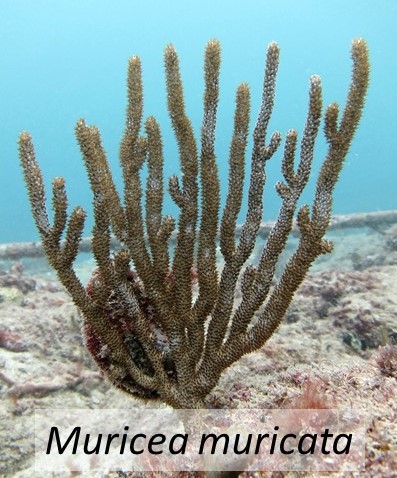
Family: Plexauridae
Common Name(s): Spiny sea fan
Colony Form: Broad, fan-shaped or candelabrum-like colony, usually no more than 30 cm tall.
Axis: Distinctly flattened where branches fork, like the web of skin between the base of your thumb and hand.
Branches: End branches short, slightly tapered and flattened; to 6 mm across but only 4.5 mm thick.
Apertures: Crowded, with sharply pointed lower lip directed upward toward branch tip.
Mucus: None
Color: Pale yellowish-brown to light brown; dries white or cream.
Sclerites: Outer layer and calices: spindles either with simple thorns on outer surface and tubercles on inner surface, or only tubercles; no branching spines; 1.0-2.5 mm long. Inner layer: blunt spindles and rods near branch tips, 0.15-0.45 mm long; coarse globular, ovate or elongate sclerites lower in colony, 0.15-0.35 mm.
Habitat: Just subtidal to 16 m, on outer reef platform and patch reefs.
Distribution: South Florida, Bahamas, and Caribbean Sea
Notes: Very similar outwardly to Muricea atlantica, which has different sclerites and no flattening of the axis or branches. Muricea laxa and M. elongata have more bushy growth forms.
References: Bayer (1961), Cairns (1977), Sanchez & Wirshing (2005).
Similar Species: Muricea elongata







